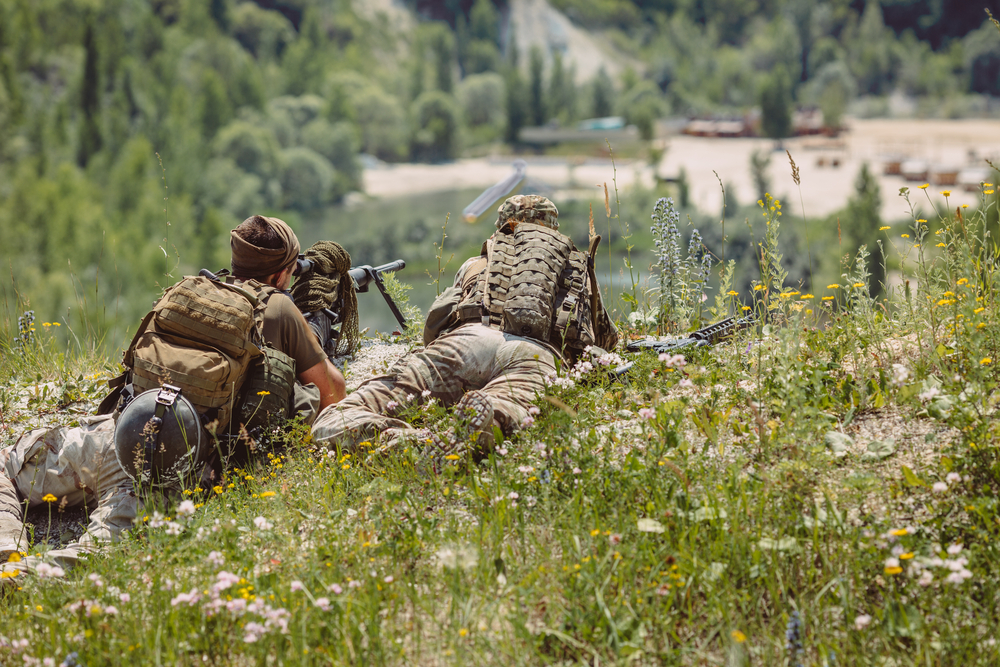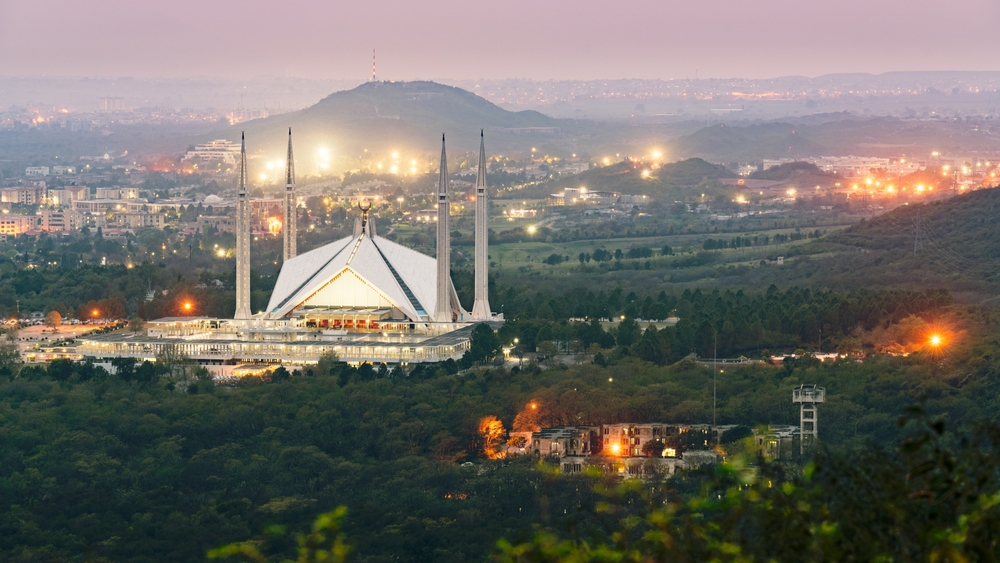Sniper shots are some of the most impressive feats of marksmanship in the world, requiring exceptional skill, precision, and the ability to calculate a variety of environmental factors. Over the years, military snipers have broken records with shots that seem almost impossible, taking down targets from incredible distances. This article explores the longest sniper shots ever recorded, showcasing the incredible accuracy and technology behind these extraordinary feats. From eliminating high-value targets in combat zones to setting world records, these shots demonstrate the power and precision of modern sniper rifles.
2,475 meters (1.5 miles) – British Army, 2009

A British sniper set a remarkable long-range shooting record in 2009 with a 2,475-meter (1.5 miles) shot in Afghanistan. The sniper, serving with the Special Forces, was tasked with eliminating a Taliban insurgent who was part of a larger group preparing an ambush. Using an L115A3 Long Range Rifle, the sniper took the shot during an operation in the Helmand Province, an area notorious for its difficulty and dangerous terrain. It took approximately eight seconds to reach its target, a challenge in itself given the shifting winds and uneven landscape. The sniper was able to engage the target precisely, even though the Taliban fighter was only visible for a brief moment. This was considered one of the longest confirmed sniper kills of the time, highlighting the growing precision and effectiveness of sniper technology. It was a moment of strategic importance, weakening enemy forces and demonstrating the increasing capability of military snipers.
2,657 meters (1.65 miles) – US Army, 2002

In 2002, a U.S. Army sniper set another significant milestone with a shot of 2,657 meters (1.65 miles) during the invasion of Iraq. This kill was made by a member of the 3rd Infantry Division, who used a .50 caliber Barrett M82 sniper rifle. The target was an Iraqi soldier operating a machine gun, and the sniper’s mission was to neutralize the threat from a great distance to ensure the safety of advancing U.S. troops. The shot, fired in the open desert, was made under challenging conditions, with shifting winds and a moving target. The sniper’s success came after months of preparation, practicing with the rifle and adjusting for factors like elevation and wind velocity. This shot remained one of the longest confirmed kills in combat at the time, further pushing the boundaries of sniper precision and long-range shooting. It was made during the early stages of the Iraq War and had significant strategic value, weakening enemy defense lines and providing a psychological advantage.
2,700 meters (1.68 miles) – US Marine Corps, 2004

In 2004, a Marine Corps sniper in Iraq managed to make a shot at an impressive 2,700 meters (1.68 miles). The sniper, part of a specialized unit tasked with providing precision fire support, used a .50 caliber Barrett M82 rifle. The target was a vehicle carrying insurgents who had been laying ambushes along a critical supply route in Fallujah. The shot was made in a desert environment, where the sniper had to calculate windage and elevation adjustments in real-time. Despite the long distance and intense heat, the sniper managed to strike the vehicle, incapacitating the insurgents inside. This kill became one of the longest confirmed sniper kills in military history at the time, and was later eclipsed by longer shots, but it remains one of the most impressive feats of precision shooting in the Iraq conflict. The impact of this shot, like others, was felt both in terms of immediate tactical advantage and psychological warfare.
3,000 meters (1.86 miles) – Australian Army, 2013

In 2013, an Australian sniper broke the 3,000-meter mark with a remarkable shot during an operation in Afghanistan. Using a Barrett M82 .50 caliber sniper rifle, the sniper engaged a Taliban fighter who was part of a larger group hiding in a mountainous region of the country. The target was approximately 3,000 meters away, which meant the bullet traveled nearly 10 seconds before it reached its destination. The sniper had to account for significant terrain variation, altitude, and high winds, all of which contributed to the difficulty of the shot. Despite these obstacles, the sniper made the kill, marking it as one of the longest sniper shots at that time. The success of this shot was due to a combination of equipment, experience, and the sniper’s ability to adjust for environmental factors. The Australian military has continued to develop its sniper capabilities, and this event highlighted their growing effectiveness on the modern battlefield.
3,220 meters (2 miles) – British Army, 2012

In 2012, a British Army sniper achieved an incredible long-range kill of 3,220 meters (2 miles) in Afghanistan. The sniper, working with British Special Forces, used an L115A3 Long Range Rifle to take down a Taliban insurgent who was in an observation post. The target was positioned in a difficult-to-reach location, which meant the sniper had to consider multiple factors like wind speed, temperature, and air pressure while making the shot. The bullet took around nine seconds to travel to its destination, and despite the challenge, the shot was successful. The sniper’s skill was on display as he accurately judged all variables, including the distance and elevation of the target. This shot, along with others, contributed to the growing reputation of the British military’s snipers and their ability to strike from extreme distances. It was one of the longest confirmed shots in the history of the British Army, marking a significant achievement in modern warfare.
3,400 meters (2.1 miles) – US Navy SEALs, 2014

In 2014, a U.S. Navy SEAL sniper achieved a long-range kill at a distance of 3,400 meters (2.1 miles) during a mission in Afghanistan. The shot was made using a .338 Lapua Magnum rifle, a weapon known for its precision and long-range capabilities. The target was a Taliban commander who had been coordinating attacks against U.S. forces. The SEAL sniper, working in a mountainous region, had to account for the terrain and altitude, as well as the wind conditions that varied with elevation. The shot was considered incredibly difficult, and the fact that the sniper succeeded in hitting the target from such a great distance was a testament to both the weapon and the sniper’s expertise. It remains one of the longest confirmed shots in SEAL history, adding to the legacy of precision shooting within the elite Navy SEAL community. The sniper’s success had a direct impact on disrupting Taliban leadership and operations in the area.
3,450 meters (2.14 miles) – Canadian Army, 2020

In 2020, Canadian sniper members of Joint Task Force 2 (JTF2) once again set a new world record for long-range shooting, this time making a kill at 3,450 meters (2.14 miles). This shot was fired during a counter-terrorism mission in the Middle East, where a member of the JTF2 sniper team used a McMillan TAC-50 rifle to eliminate an ISIS fighter who posed an imminent threat. The target was located in an open area, which meant that the sniper had to adjust for wind, elevation, and other atmospheric conditions. It took nearly 11 seconds for the bullet to travel that far, and the sniper made the shot with precision, hitting the target with minimal deviation. This achievement further reinforced Canada’s elite sniper capabilities and established JTF2 as one of the top-tier special forces units globally. The shot was a significant tactical win, as it not only neutralized a threat but also disrupted the activities of a key ISIS operative. This record-breaking moment highlighted the importance of precision and the advancements in sniper rifle technology.
3,540 meters (2.2 miles) – Canadian Army, 2017

In 2017, a Canadian sniper team set a new world record by making a shot from an astounding 3,540 meters, or 2.2 miles, during an operation in Iraq. The shot was fired by a member of Joint Task Force 2 (JTF2), Canada’s elite special forces unit, and hit a target that was a distant ISIS fighter. The operation took place in the region of Mosul, where Canadian forces were working alongside coalition troops. The sniper, using a McMillan TAC-50 rifle, took nearly 10 seconds for the bullet to travel the distance, navigating both wind and the Earth’s curvature. The target was a group of ISIS combatants, and the mission was to disrupt their leadership from afar. The sniper’s aim was accurate despite challenging conditions such as high winds, making the shot even more impressive. This record-breaking moment showcased both the skill of the sniper and the sophisticated technology behind modern sniper rifles.
3,700 meters (2.3 miles) – British Army, 2017

A British sniper set a remarkable record in 2017 with a shot at 3,700 meters (2.3 miles) while deployed in the Middle East. Using an L115A3 sniper rifle, the sniper engaged a high-value target believed to be a member of a terrorist cell operating in the region. The sniper had to account for the extremely long distance, and the shot required a detailed understanding of atmospheric conditions, including temperature and wind patterns. The mission was of strategic importance as it aimed to eliminate a key figure in a terrorist organization that posed an ongoing threat to regional stability. The sniper was in an elevated position, which allowed for a better line of sight and more accurate adjustments for environmental factors. The kill had immediate tactical benefits, reducing the enemy’s leadership and operational capabilities.
3,800 meters (2.4 miles) – Australian Army, 2019

In 2019, an Australian sniper made an extraordinary 3,800-meter (2.4 miles) shot, which at the time was one of the longest confirmed sniper kills in history. The shot was fired by a member of the Australian Special Forces during an operation in Iraq. The target was a high-ranking member of ISIS who had been identified as a threat to coalition forces. Using a Barrett M82 .50-caliber sniper rifle, the sniper took the shot after carefully assessing the wind, range, and other environmental factors. The bullet took about 10 seconds to travel the distance, and despite the challenging conditions, the sniper’s accuracy was flawless. It was remarkable not only for its length but also for the skill required to account for the Earth’s curvature and the intense desert winds. The operation was a strategic success, eliminating a key target from a distance and reducing the threat posed by ISIS forces in the region.
This article originally appeared on Rarest.org.
More from Rarest.org
21 Forest Plants That Thrive in Low-Light Conditions

Forest floors are often shaded, but that doesn’t mean they’re barren. Many plants thrive in low-light conditions, adding greenery and life to the darkest corners of the woods. Read More.
10 Largest Mosques in the World

Mosques are not just places of worship but also architectural marvels that represent the cultural, spiritual, and artistic heritage of the Islamic world. Across the globe, these structures stand out for their immense size, intricate designs, and historical significance. Read More.
20 Exotic Birds With Stunning Plumage Found in Remote Islands

The world’s remote islands are home to some of the most exotic and visually stunning birds on the planet. These unique species often develop vibrant plumage and fascinating behaviors, thriving in isolated habitats far from human disturbance. Read More.
